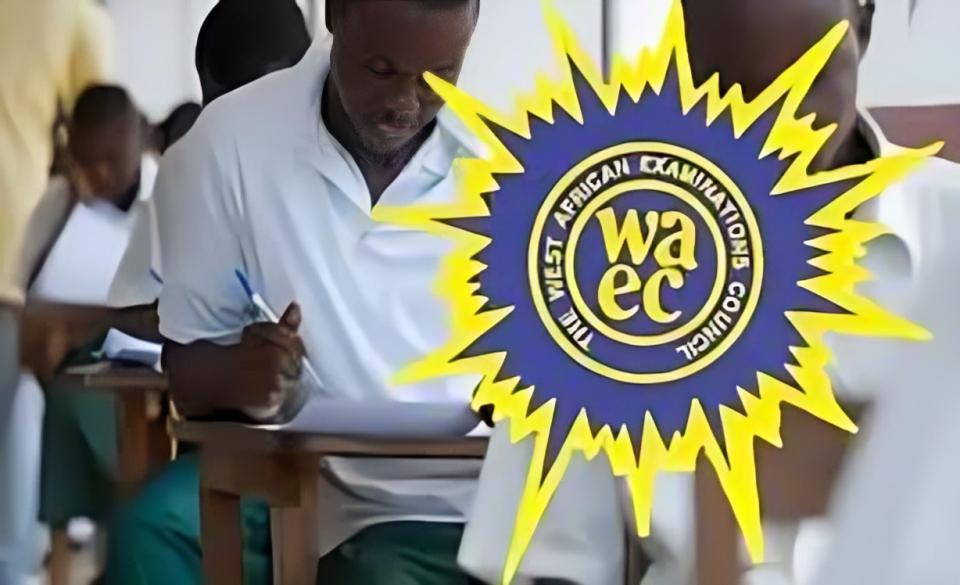WAEC Further Mathematics Syllabus 2025/2026

Don’t waste time reading aimlessly! To study effectively and perform well on your Examination, Study the WAEC Further Mathematics Syllabus 2025/2026
Get it now!
Writing Further Math on WAEC Exams?
Hi there! Will you be writing Further Mathematics in the next WAEC exams as a science or business student? Then you ought to read this.WAEC Further Mathematics Syllabus 2025/2026
You must read this syllabus because it covers every topic you need to concentrate on in order to get an A or B on your tests in further mathematics.
The syllabus will test you on your understanding of this subject which is a bridge between Elementary Mathematics and Higher Mathematics.
Contents
AIMS OF THE SYLLABUS
The syllabus’s objectives are to assess candidates’ (i) growth in mathematical conceptual and manipulative abilities;
- ii) comprehension of an intermediate course of study that connects elementary and higher mathematics
- (iii) learning of mathematical concepts that can be applied to the needs of future mathematicians, engineers, scientists, and other professionals.
- (iv) the capacity to evaluate information and reach reliable conclusions
- (v) logical, abstract and precise reasoning skills.
There will be two papers, Papers 1 and 2, both of which must be taken. The entire syllabus will be covered in the forty multiple-choice objective questions that make up PAPER 1. For 40 marks, candidates must complete all questions in one and a half hours.
WAEC Further Mathematics Syllabus 2025/2026
WAEC Further Mathematics Syllabus | ||
| SN | TOPICS | OBJECTIVES |
| PAPER 1: PURE MATHEMATICS | ||
| 1 | SETS | (i) Idea of a set defined by a property, Set notations and their meanings. (ii) Disjoint sets, Universal set and complement of set (iii) Venn diagrams, Use of sets And Venn diagrams to solve problems. (iv) Commutative and Associative laws, Distributive properties over union and intersection. |
| 2 | SURDS | Surds of the form a/√b , a√b and a+b√n where a is rational, b is a positive integer and n is not a perfect square. |
| 3 | BINARY OPERATION | Properties: Closure, Commutativity, Associativity and Distributivity, Identity elements and inverses. |
| 4 | LOGICAL REASONING | (i) Rule of syntax: true or false statements, rule of logic applied to arguments, implications and deductions. (ii) The truth table |
| 5 | FUNCTIONS | (i) Domain and co-domain of a function. (ii) One-to-one, onto, identity and constant mapping; (iii) Inverse of a function. (iv) Composite of functions |
| 6 | POLYNOMIAL FUNCTIONS | (i) Linear Functions, Equations and Inequality (ii) Quadratic Functions, Equations and Inequalities (iii) Cubic Functions and Equations |
| 7 | RATIONAL FUNCTIONS | (i) Rational functions of the form (ii) Resolution of rational functions into partial fractions. |
| 8 | INDICES AND LOGARITHMIC FUNCTIONS | (i) Indices (ii) Logarithms |
| 9 | PERMUTATIONS AND COMBINATIONS | (i) Simple cases of arrangements (ii) Simple cases of selection of objects |
| 10 | BINOMIAL THEOREM | Expansion of (a + b)n . Use of (1+x)n ≈1+nx for any rational n, where x is sufficiently small |
| 11 | SEQUENCES AND SERIES | Expansion of (a + b)n . Use of (1+x)n ≈1+nx for any rational n, where x is sufficiently small |
| 12 | MATRICES AND LINEAR TRANSFORMATION | (i) Matrices (ii) Determinants (iii) Inverse of 2 x 2 Matrices (iv) Linear Transformation |
| 13 | TRIGONOMETRY | (i) Trigonometric Ratios and Rules (ii) Compound and Multiple Angles. (iii) Trigonometric Functions and Equations |
| 14 | CO-ORDINATE GEOMETRY | (i) Straight Lines (ii) Conic Sections |
| 15 | DIFFERENTIATION | (i) The idea of a limit (ii) The derivative of a function (iii)Differentiation of polynomials (iv) Differentiation of trigonometric Functions (v) Product and quotient rules. Differentiation of implicit functions such as ax2 + by2 = c ** (vi) Differentiation of Transcendental Functions (vii) Second order derivatives and Rates of change and small changes (∆x), Concept of Maxima and Minima |
| 16 | INTERGRATION | (i) Indefinite Integral (ii) Definite Integral (iii) Applications of the Definite Integral |
| PAPER II: STATISTICS AND PROBABILITY | ||
| 17 | STATISTICS | (i) Tabulation and Graphical representation of data (ii) Measures of location (iii) Measures of Dispersion (iv)Correlation |
| 18 | PROBABILITY | (i) Meaning of probability. (ii) Relative frequency. (iii) Calculation of Probability using simple sample spaces. (iv) Addition and multiplication of probabilities. (v) Probability distributions. |
| PAPER III: VECTORS AND MECHANICS | ||
| 19 | VECTORS | (i) Definitions of scalar and vector Quantities. (ii) Representation of Vectors. (iii) Algebra of Vectors. (iv) Commutative, Associative and Distributive Properties. (v) Unit vectors. (vi) Position Vectors. (vii) Resolution and Composition of Vectors. (viii) Scalar (dot) product and its application. **(ix) Vector (cross) product and its application. |
| 20 | STATICS | (i) Definition of a force. (ii) Representation of forces. (iii) Composition and resolution of coplanar forces acting at a point. (iv) Composition and resolution of general coplanar forces on rigid bodies. (v) Equilibrium of Bodies. (vi) Determination of Resultant. (vii) Moments of forces. (viii) Friction. |
| 21 | DYNAMICS | (i) The concepts of motion (ii) Equations of Motion (iii) The impulse and momentum equations: **(iv) Projectiles. |
WAEC Further Mathematics Recommended Textbooks 2025/2026
- T.R Moses Spectrum New Further Further-mathematics (Scholastic Series).
- Tuttuh Adegun M.R. et al Bounty Press LTD. New Further Further-mathematics Project. 1 – 3
- Ivowi et-al. Further mathematics (NERDC)
Conclusion
To prepare for the upcoming West African Senior School Certificate Examination (WASSCE), do you need the most recent syllabus? If so, you’ve found what you were looking for.
You’ve learned almost everything you need to know about the subject you registered for from these syllabi, WAEC Further Mathematics Syllabus 2025. which also serve as your guide to answering WAEC questions. They are meticulous, precise, and well-structured. They serve as a channel of communication between test-takers and the West African Examinations Council (WAEC).
Every year, we also learned the causes of subpar performance on the WAEC exams. Our findings helped us to realize that students’ poor performance on the WASSCE is caused by their ignorance of common pitfalls, insufficient syllabus coverage, and unfamiliarity with the
